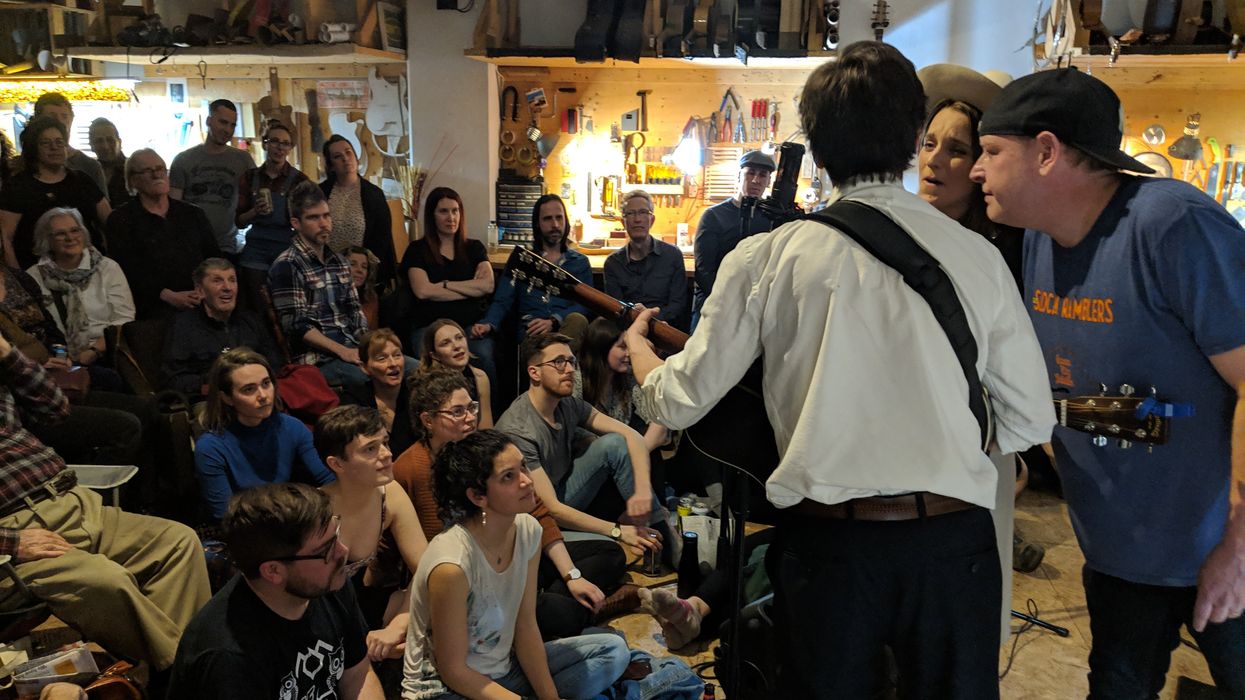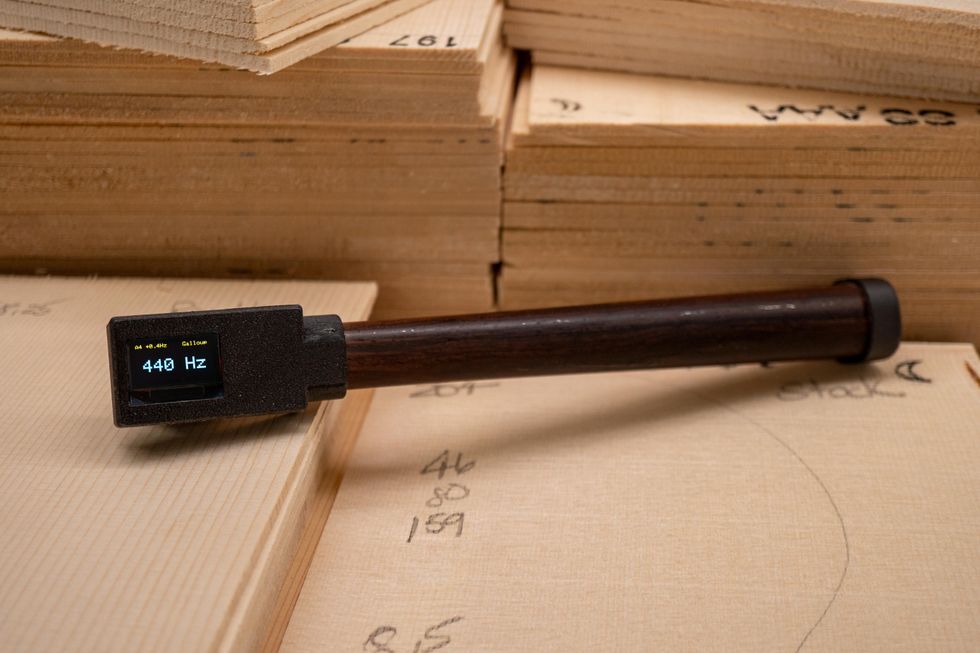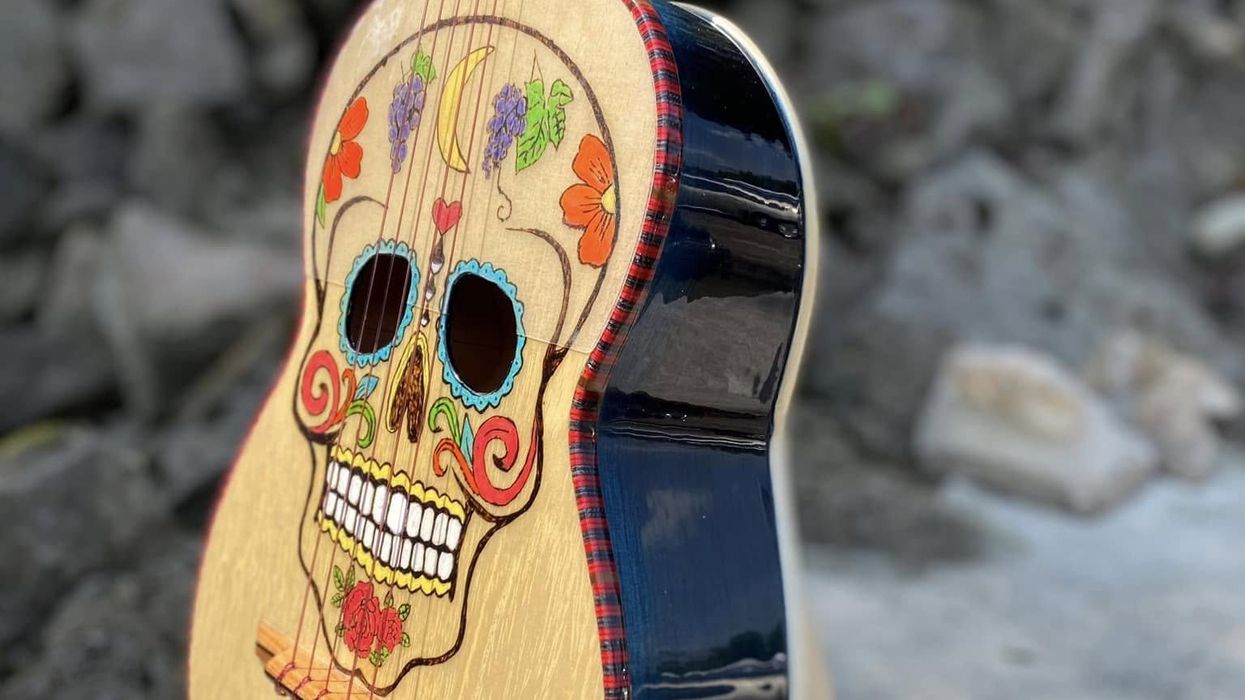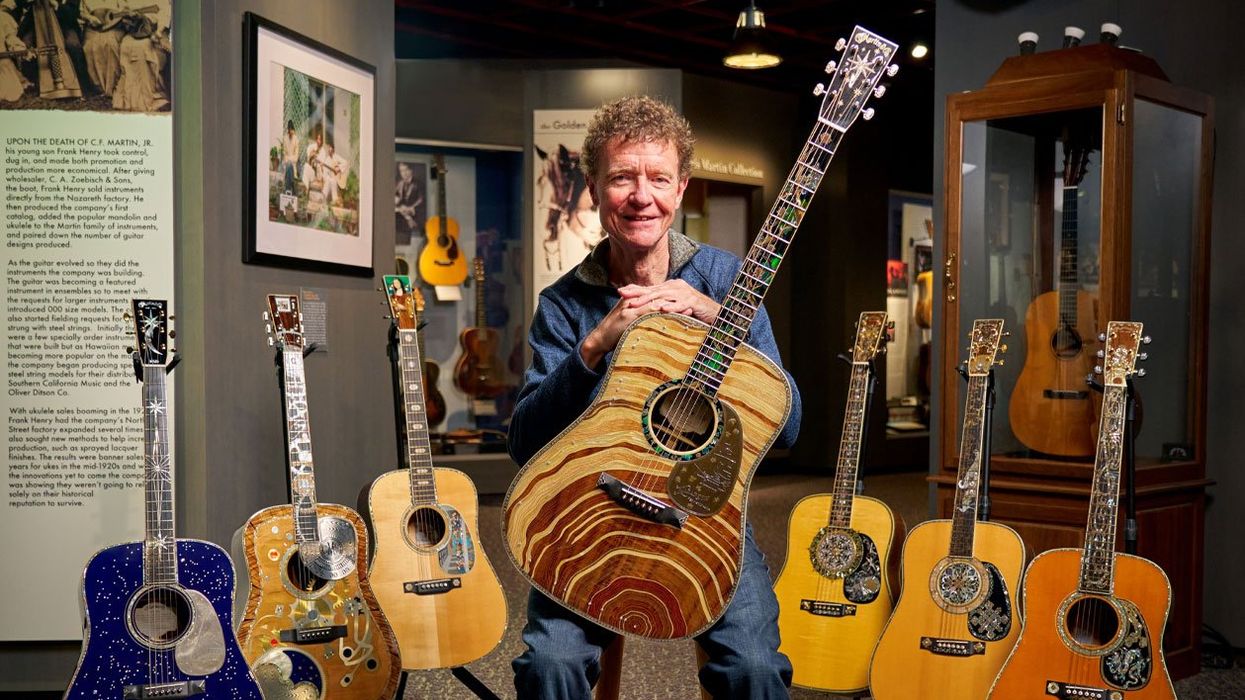There are things one should expect to see,
hear, and find on an expensive new guitar
(vintage guitars are subject to different standards)
that won’t be found on cheaper instruments.
This month, I’d like to share my own
abbreviated list of expectations.
• A premium guitar should display impeccably
clean workmanship. “Workmanship” here
implies handwork, not machine work. That
means smooth, ripple-free surfaces that speak
of good wood preparation, a lack of visible file
or sandpaper marks, and crisp joints, seams,
and edges. The finish should be mirror-smooth
and free of tiny scratches. If you’re considering
buying something, I recommend spending a
good 10 minutes carefully looking it over—use
a magnifying glass, if necessary.
• The guitar should feature all-wood construction
and appointments. This comes automatically
on classical guitars, but steel-string
guitars—even expensive ones—frequently feature
plastic bindings, purfling, tuner buttons,
etc. The market has long since accepted this,
but wood is better. Solid wood soundboxes
are best. Plywood or laminated woods (even
though these materials might look good) are
characteristic of cheaply made instruments.
• It should have mitered purfling joints. (A
mitered joint is like what’s used in picture-frame
corners.) Every angled juncture of line
elements should be a mitered joint, not a
butted one.
• If tone is your focus, then straight-grained
body woods are more desirable than highly
figured and wavy ones. The straighter the
grain, the more stable and predictable are
the soundbox’s vibrational properties.
• A certain amount of customizing is a plus.
It’s not unreasonable to expect some original
inlay work, such as beautiful shop-made
rosettes, but some guitars are so ornamented
they stop being instruments and become
artwork that uses guitar-shaped wood as a
canvas. Such guitars belong in art galleries,
not music stores.
• It should have delicate elements, such as
small-profile heels. The typical neck-heel curve
has a 4" diameter, achieved by the front roller
of a belt sander. Smaller heel curves require
more work and are ergonomic—they let the
left hand get closer to the upper frets.
• The strings should be evenly spaced.
You’d be surprised at how many guitars are
sloppy in this regard.
• The guitar should feature rounded, not beveled,
fret ends. Rounded ends provide more
playing area than beveled frets.
• If the guitar is a cutaway model, the cutaway
should blend seamlessly into the neck
and heel, without the “corners” that many
guitars offer. Seamlessness of construction is
always a clue that something is better made.
• Heel caps are best if they are an extension
of the arched surface of the back, rather than
being a stepped point of discontinuity. This
goes to the fact that, traditionally, the best guitars
are made with necks that are firmly part
of the guitar body. Lately, guitars with bolt-on
necks have been making inroads into high-priced
guitar territory, but traditionalists consider
this to be second-tier level construction.
• It should be intelligently voiced. Most buyers
don’t know what to look for, but a guitar’s
responsiveness is the proof of its voicing. If
the guitar’s sound surprises and pleases you,
you’re holding a well-voiced instrument.
• It should sport extensive handwork at every
stage and level of the instrument. Production
facilities make money in direct proportion to
how much time they can save at each step.
One should expect to see handmade rosettes
rather than commercially bought ones, as well
as tasteful touches such as wrap-around fretboard
bindings and heel cap inlays.
• It should have a thin finish. These are
more work-intensive to apply and buff out,
but make a louder and more responsive guitar
than would be possible with “standard”
finishes. The difference in tap tone between
a naked guitar top or back, and one that is
covered (and damped) by a standard finish, is
shockingly obvious the first time you hear it.
• Instrument playability should be remarkably
easy. This will have to do with the
correct set and relief of the neck and an
optimal height of the strings above the
frets. Steel-string guitars should have about
2/32" clearance between the 12th fret
and the 1st string, and 3.5/32" clearance
between the 12th fret and the 6th string.
For classical guitars, these numbers can be
increased by 1/32". When these things are
done correctly, a guitar plays cleanly, easily,
and without string buzzes.
• On the bridge, the saddle should hold the
strings about 1/2" above the guitar’s face on
both steel- and nylon-string instruments. In
either case, the saddle should protrude above
the bridge itself by at least 1/16", but not
more than 1/8".
• It should play in tune. Most guitars, especially
steel-string instruments, don’t play
perfectly in tune, but you should expect an
expensive guitar to not have this problem,
either from string-to-string across the fretboard,
nor up and down the fretboard at any
and all positions.
• The guitar’s center-of-balance is a positive
design feature. If you’re going to play a guitar
while seated, its mass needs to be well distributed
on either side of the waist. You want it to
rest comfortably in your lap without you having
to expend any effort to hold or balance it.
• It should have superior design. The lines,
proportions, and curves will all be deliberately
considered and matched to the guitar’s other
lines, proportions, and curves. The aesthetic
will be pleasing to look at and one won’t tire
of it quickly. As simple as this sounds, anything
that has a classic, timeless look is based
in years of thought and experience.
• Finally, an expensive guitar should have
a sound that’ll knock your socks off. People
describe the best guitars with such words as
“piano-like,” “full,” “rich,” clear,” “sweet,”
“warm,” “powerful,” and “evenly responsive.”
Your guitar should be described like
this as well.
Ervin Somogyi
A professional luthier since the early ’70s, Ervin Somogyi is one of the world’s most respected acoustic-guitar builders. To learn more about him or his guitars, visit esomogyi.com.


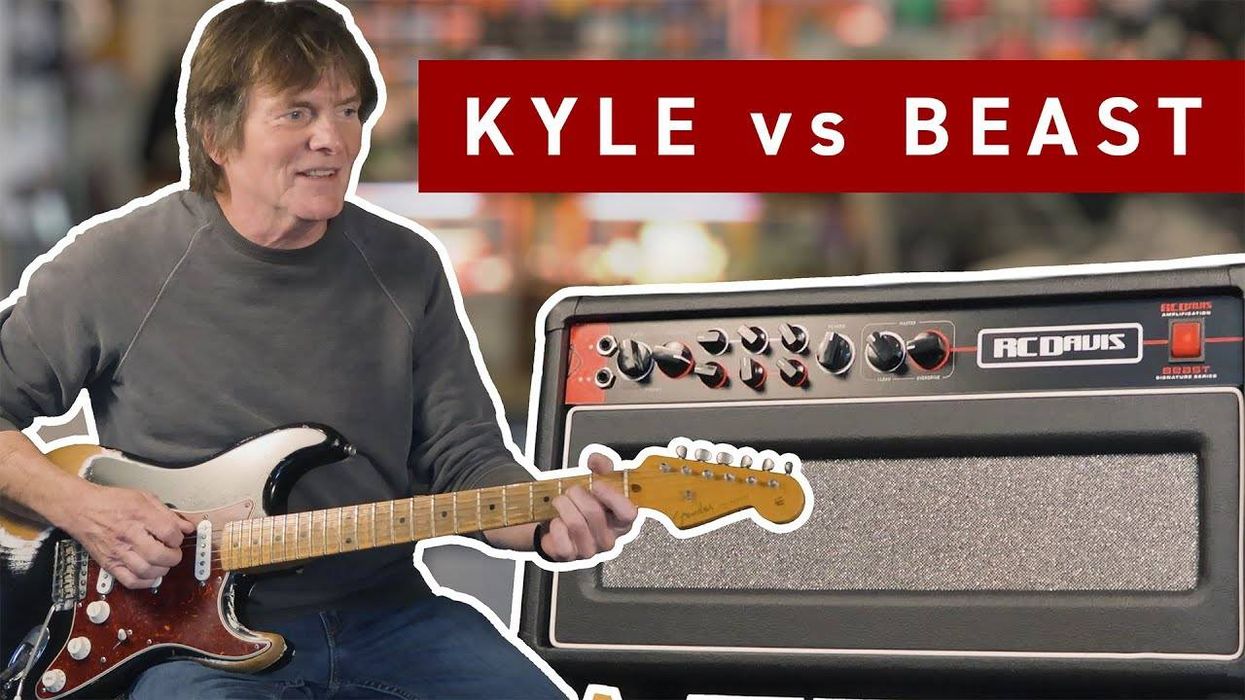
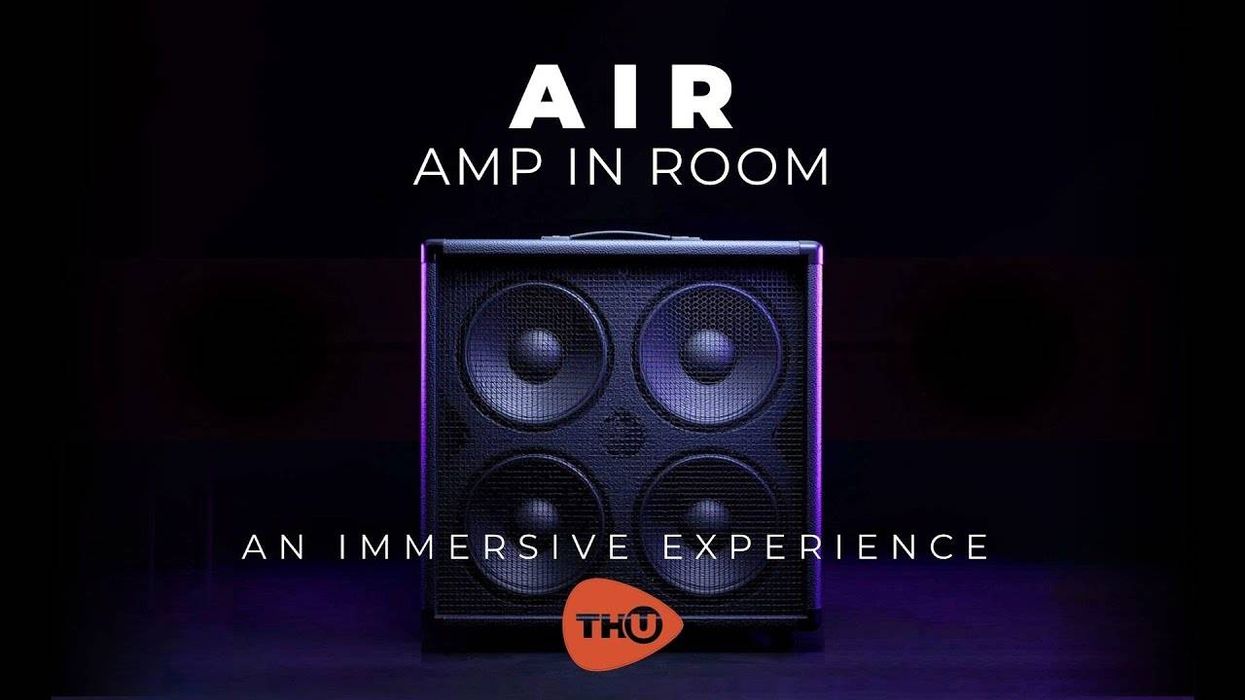


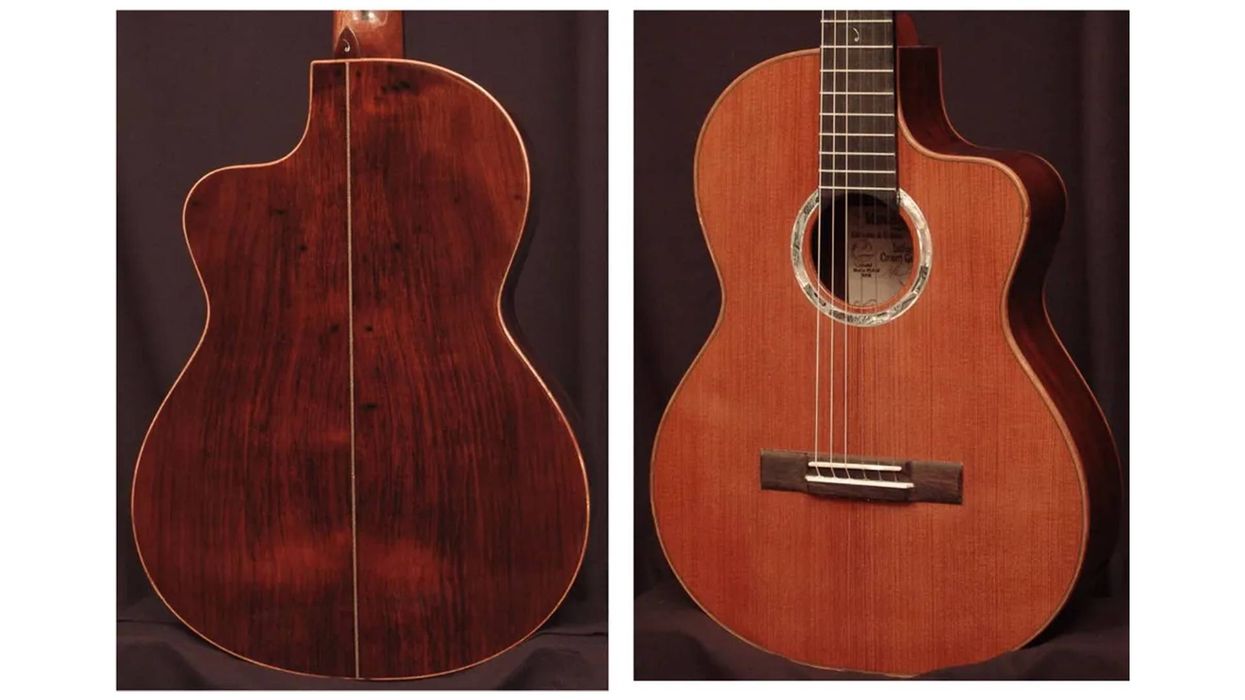



![Rig Rundown: Russian Circles’ Mike Sullivan [2025]](https://www.premierguitar.com/media-library/youtube.jpg?id=62303631&width=1245&height=700&quality=70&coordinates=0%2C0%2C0%2C0)


